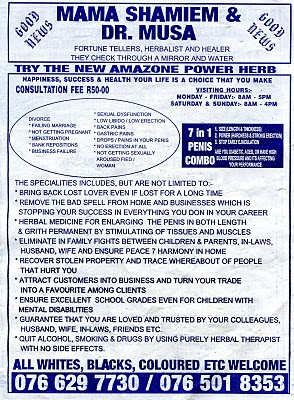Click Exit (Reboot Now will reboot your computer, only press if you're ready to reboot, i.e., no other programs are open).
To customize Xubuntu you can follow the steps on page two of the above link.
Mark Vonnegut, son and introduction author, states, “Writing was a spiritual exercise for my father, the only thing he really believed in.” He then reveals more and more about the man behind such well-crafted work and wit. In this volume the works themselves reveal much about Kurt Vonnegut and about his journey out from the heavy weight of war. I often wondered whether some of these works weren't published sooner (they were published posthumously) because they were too personal and whether they pre-dated Slaughterhouse-Five given that they lack the detachment and satirical intensity of that and later works.
At times the reader seems to be witnessing Vonnegut process his past. For example, a British lance corporal appears in both Spoils and Just You and Me, Sammy (different accounts of his escape from prison), presumably because Vonnegut had weighed his decision to await the Russian advance, something the corporal warns against. His protagonists have clear morals and clash with those who lack them. They question whether upholding their morals in such conditions was worth it — life was so much easier for collaborators. In these stories war seems to be much less about sides than about personal struggle. For example, in The Commandant's Desk liberators bring both good and evil (freedom and continued occupation).
By the end of the collection of essays he seems to have come to terms with the horrors he witnessed, but just enough to still warn others; however, he seems to have also realized the difficulty of communicating such a warning. In Happy Birthday, 1951 an old man attempts to dim the appeal of war to a young boy. In other words you might as well “write an anti-glacier book.” Great Day imagines a future army without war, so much so that they train via a time machine on long-distant battlefields. War will always be present even if it's just a fantasy in a utopia. The title-story takes place in a future where scientists trap the Devil to overcome war, but there's a catch — it takes much effort to maintain peace.
In God Bless you, Dr. Kevorkian, written much later than most of these works he's gained a perspective through which he can argue the faults of war without raw emotion. Kilgore Trout, a recurring character of Vonnegut's, states regarding Kosovo:
NATO should have resisted the nearly irresistable temptation to be entertainers on television, to compete with movies of blowing up bridges … All cities and even little towns are world assets. … The homicidal paranoia and schizophrenia of ethnic cleansing does its worst quickly now, almost instantly, like a tidal wave or volcano … The disease used to take years. One thinks of Europeans killing off the Aborigines … The Tasmanian genocide, incidentally, is the only one of which I've heard which was one-hundred-percent successful.
Armageddon in Retrospect is adorned with ink and pencil sketches that call into question Vonnegut's assertion that the only thing he was good at was writing. The Unicorn Trap is the only story without a backdrop of modern warfare. Although it's set in Norman England, it still wrestles with the morality of conflict:
“Grand, all right,” said Elmer. He was a small man with a large-domed head. His blue eyes were restless with unhappy intelligence. His small frame was laced with scraggly ropes of muscle, the bonds of a thinking man forced to labor.
Few art mediums have worked as hard to gain credibility as graphic novels, perhaps fantasy and sci-fi in their quest to be regarded as literature. Legitimacy seems to have been granted given the expanding sections of this genre in libraries and bookstores, but many, including me remain sheepish when perusing them.
I jumped on the bandwagon with many when Batman: The Dark Night Returns and The Watchmen appeared on the scene. Both jump started the genre to such a degree that they're on the minds of many today due to their Hollywood adaptations. I became more impressed with this genre and moved through the works of Pekar (a full tribute is in the works).
The Adventuress by Audrey Niffenegger (author of The Time Traveler's Wife) was originally published by hand in the 80's. It reminds me of La passion de Jeanne d'Arc – the threshold, the tears behind those eyes, the isolation, and the nuns. Egypt also comes to mind: hands floating without arms hold veils, wine-glasses, and judgement; Eyes sometimes swirl but never blink or have a face. There's also alchemy, a cat, and transformation. The soul mourns a body with crossed arms folded under the chin. Ancient Greece comes to mind with play on weaving (Penelope); however, here a skirts unravelled to create a cocoon. The character seems to have conflicting emotions (thumoi) given the cleft figure and one that hugs and chokes itself. It's such a fantastical world that she, a moth, feasted on Napoleon's books.
The Pride of Baghdad presents war through the eyes of lions. At times the novel becomes too anthropomorphic — sex and rape, moral dilemmas (whether or not to eat humans) — but the point gets across. War starts when the zoo keepers throw them a donkey, enough food to last a while. Bombs blow up the pen's walls and they're free. They embark on a journey and on the way meet a wise turtle who states,
Tigris is the name of the river, dummy. … Everything's got a name. It's how we make crap belong to us. And this stretch of crap is my fishing hole.
There's black stuff under the earth, boy. Poison. When the walkers fight, they send it spewing into the sky, and spilling into the … into the sea.
Although the dialogue can be predictable, the illustrations make use colour very effectively, the dark grey and sepia of tragedy and bright tones for violence. On the whole, the work seems a little too surreal for war, but that might just be how lions view things.
I might as well clinch my reputation as a world-class nutcase by saying something good about Karl Marx, commonly believed in this country, and surely in Indian-no-place [Indianapolis], to have been one of the most evil people who ever lived.
He did invent Communism, which we have long been taught to hate, because we are so in love with Capitalism, which is what we call the casinos on Wall Street.
Communism is what Karl Marx hoped could be an economic scheme for making industrialized nations take good care of people, and especially of children and the old and disabled, as tribes and extended families used to do, before they were dispersed by the Industrial Revolution (Vonnegut, K. 2008. Armageddon in Retrospect, p. 23).
 Another sensibility that I lost pretty quickly was pedestrian right-of-way. Drivers gave me courteous beeps, but such notions can be dangerous (I had a few close calls in my jet-lagged stupor). Like Europe, standard transmission dominates the market, so drivers are quite skilled, but the numerous construction projects made navigation difficult. I still can't get over the lack of seat-belt laws. I desperately wanted to fasten a belt around the new-born in the front seat. Although I wanted to stay and try to get tickets for the Brazil/Portugal, which turned out to be rather flat, the time had come for me to go. I made it to Sandton (an up-scale suburb into which a number of downtown businesses fled when the fence came down) and then to the GauTrain.
Another sensibility that I lost pretty quickly was pedestrian right-of-way. Drivers gave me courteous beeps, but such notions can be dangerous (I had a few close calls in my jet-lagged stupor). Like Europe, standard transmission dominates the market, so drivers are quite skilled, but the numerous construction projects made navigation difficult. I still can't get over the lack of seat-belt laws. I desperately wanted to fasten a belt around the new-born in the front seat. Although I wanted to stay and try to get tickets for the Brazil/Portugal, which turned out to be rather flat, the time had come for me to go. I made it to Sandton (an up-scale suburb into which a number of downtown businesses fled when the fence came down) and then to the GauTrain.